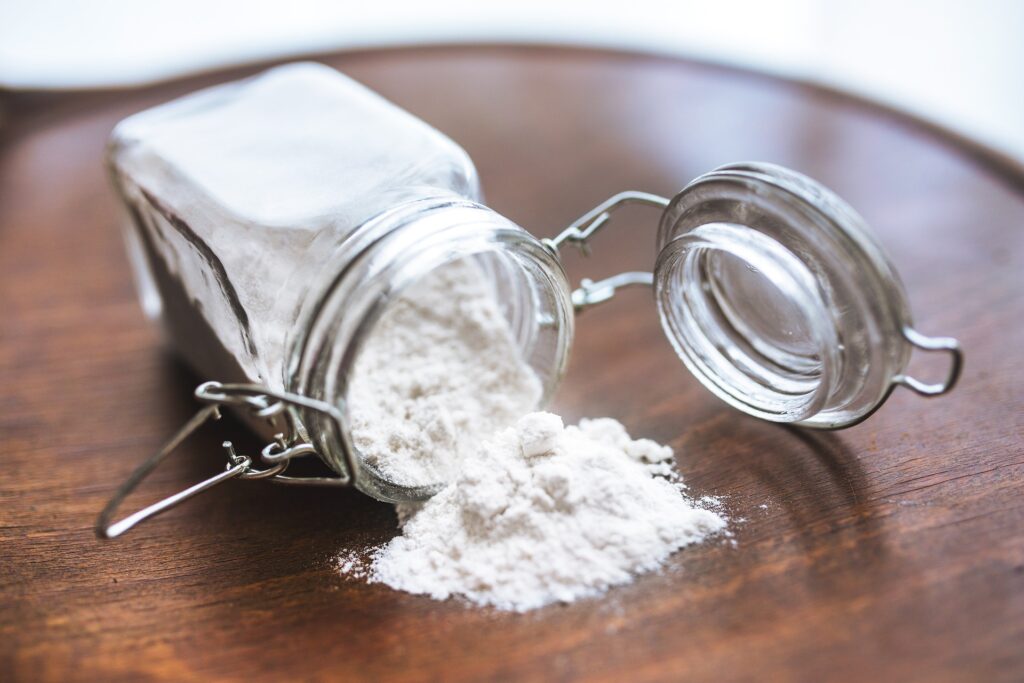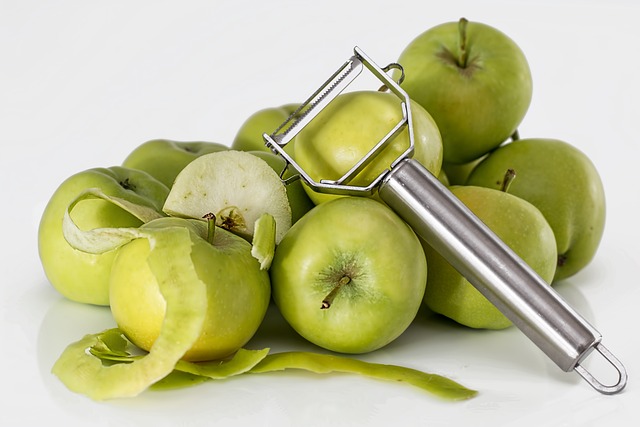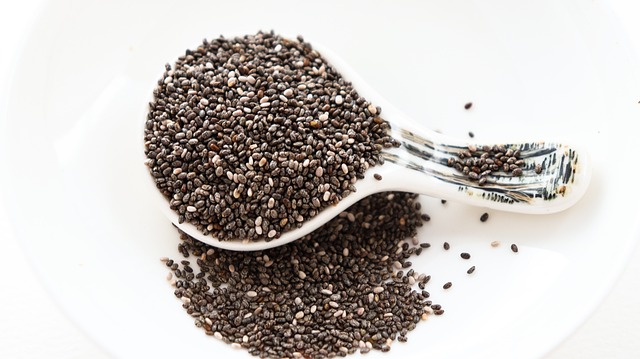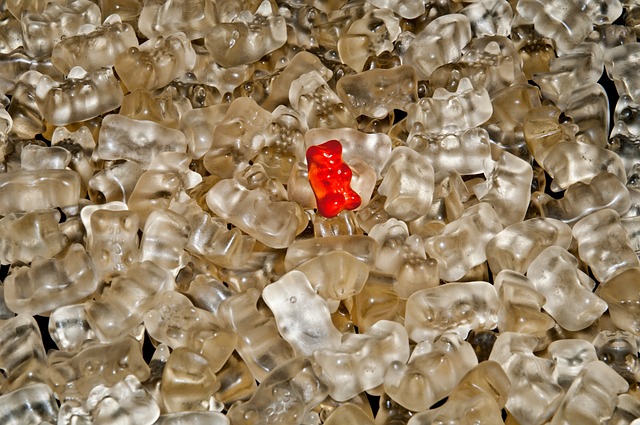Making homemade preserves is a great way to ensure that you know exactly what is going into them. You can also customize the flavours to your liking, and thicken them in different ways depending on what you are using as a thickener. While there is a range of different ways of thickening preserves, they all have their benefits and their limitations.

Fifteen of the more popular options for thickening preserves are listed below.
Lemon Juice
Lemon juice is a common thickener used in making preserves.
You can use fresh lemon juice or bottled lemon juice. The acidity of bottled lemon juice is standardized, while it will be variable with fresh lemon juice. Understandably the processing involved in making bottled lemon juice does reduce some of its nutritional value.
Benefits:
- It is a convenient and flavorful thickener for preserves.
- It is an effective thickener because it contains pectin, which is a natural gelling agent.
- It can add a complimentary freshness and brightness to the flavour of some preserves.
Limitations:
- You can only use it in small, and if needed, incremental, quantities, as too much lemon juice will make the preserves too tart and too thick.

- Lemon juice may cause the preserves to become more acidic over time.
- You need to use it by slowly adding small amounts only to avoid changing the flavour of the preserve too significantly.
Cook for a Longer Time
One option is to cook the preserve for a longer period.
Benefits:
- Cooking for longer can help to intensify the flavour of the preserve.
- Well-cooked preserves typically have a softer texture, which can be desirable in some cases.
- It is easy to do – just keep checking and stirring occasionally.
Limitations:
- Be careful not to overcook the preserve, as this can cause it to become too thick or even burnt.
- The outcome can be a jam that is too firm and not easily spreadable.
- It adds time to the making process, which may not be convenient.
Add/Include High pectin fruit – Natural Pectin Option
High-pectin fruits and under-ripe fruits are often used as a thickener when making preserves.
Benefits:
- No additives, so you will be using a natural agent to thicken.
- High pectin fruits and fruits in an under-ripe state contain higher levels of natural pectin, which is a type of soluble fibre that helps to thicken liquids. Pectin is also known for its ability to bind together various ingredients, which can help to improve the texture and stability of preserves.
- You could choose to use a high-pectin fruit that complements and enhances the flavour of your preserve.

- Left-over lemon or apple peels can be a good source of additional natural pectin. These are removed ahead of ladling the preserve into jars. Using these is another way to maximise the use and benefits of these foods, and reduce wastage.
Limitations:
- If too much pectin is used, it can cause the preserve to become excessively thick or even gel-like in texture.
- Pectin is temperature-sensitive, so it may not be effective in preserving jams and other fruit spreads that are heated to high heat in a canning process.
- You need to know what your high-pectin fruits are and they have to be added to your ingredient list – this may have some impact on the ratio of fruit to other ingredients.
- Depending on your choice, ripeness and amount of high-pectin or underripe fruits used you can affect the flavour of the preserve.
Commercial Pectin for thickening preserves
You can use commercial pectin for all sorts of fruits. This helps it to set consistently (in theory at least).
Remember to follow the pectin packet/bottle instructions. And use the correct type of pectin for a specific recipe. You handle powdered pectin differently from liquid pectin.
Benefits:
- Once you have found the one you feel confident working with, you can have it easily available for use in your store cupboard – whether it be pectin powder or liquid.
- It comes both traditional with full sugar content or low/no-sugar varieties which allow you more control over what goes into each batch.
- Jellies or jams that you make with with low-pectin fruit like melons can reliably be made with the addition of this type of pectin.
Limitations:
- You need to learn and experiment with the best way to use it to have consistent results. It can be too easy to use it incorrectly – a common mistake is putting too much pectin put into the mixture. Until you become more familiar with the ideal conditions for pectin powder and/or liquid and amounts to use, preserves may tend towards thick and rubbery, with a bit of a dull flavour.
- You need to use the specific type of pectin specified by the recipe.
- Powdered pectin can cause ‘clump’ in the jam mixture – to prevent this you may need to either stir the pectin powder well through the sugar before adding it together and facilitating dispersal of the pectin or mix the pectin powder with some liquid and blend it ahead of adding to your preserve.
Reduce the Water Content of the Fruit Mixture:
One common way to thicken fruit preserves is to cook them with less water, which concentrates the sugars and other solids.
Benefits:
It’s easy to do and doesn’t require any special or additional ingredients
It results in a product with a very intense flavour which may be a bonus outcome.
Limitations:
- It can be difficult to achieve the right consistency, if the preserve is too thick, it will be difficult to spread, and if it’s too thin, it won’t have the desired effect.
- This process can result in a product that is very sweet and sticky.
Fruit Juice Concentrate:
When making preserves, some people choose to use fruit juice concentrate as a thickener.
Benefits:
- You can use fruit juice concentrate to add additional flavour to preserves.
- Using a high-pectin fruit concentrate e.g. apple can naturally help with the thickening of the jam.
Limitations:
- It can be difficult to find.
- It can add a lot of sugar and sweetness to the preserves.
- Can also make the preserve more susceptible to spoilage.
Cornstarch
Cornstarch is a popular thickener for preserves. However, there are some drawbacks to using cornstarch as a thickener.
Benefits:
- It is relatively flavourless and can be used to thicken both fruit and vegetable-based preserves.
- Relatively inexpensive and available in most stores.
- Easy to use
Limitations:
- It can cause the preserves to become cloudy.
- Cornstarch can lose its thickening power if it is overcooked or the heat is too high.
- You must use it carefully in small increments and cook it through on low heat with active monitoring of the developing thickness of the mixture. As a result, many experienced preserve-makers prefer to use other thickeners, such as pectin or chia seeds instead.
ClearJel:
ClearJel is a modified cornstarch that is used as a thickener in preserves. It is available in both powder and granular form, and it has several advantages over other thickeners, such as arrowroot powder.
Benefits:
- This type of cornstarch is specially designed for use in preserves.
- ClearJel tolerates high temperatures. It is used by both home and professional cooks to make preserves and fruit pie fillings.
- It is less likely to cause cloudiness in the preserve.
- It has a somewhat neutral flavour which tends not to interfere with the flavour of the preserve.
Limitations:
- ClearJel can be difficult to find and may not be available in all areas.
- It can be difficult to dissolve, so it is important to add it to the preserve gradually while stirring constantly.
Arrowroot
Arrowroot is a type of starchy root vegetable that has been used as a food thickener for many centuries.
Benefits:
- Arrowroot is gluten-free and grain-free, making it a good choice for people with dietary restrictions.
- It has a neutral flavour.
- It is particularly effective in thickening acidic liquids such as fruit juices and tomato-based preserves.
Limitations:
- You must make a slurry of the powder with some cold water first ahead of adding it to your mixture.
- Arrowroot can cause preserves to become gummy if you use too much, so add in small amounts at a time.
- Add the arrowroot slurry towards the end of the cooking time as it can otherwise start to break down at high temperatures.
Chia Seeds for thickening preserves
- Chia seeds are an increasingly popular natural and easy choice for thickening jams and other preserves. Chia seeds are small black seeds from the chia plant, Salvia Hispanica, a member of the mint family of plants. They have been used for many years as a food source, and benefits from being high in fibre
Benefits:

- They are also a good source of fibre and other potential health-beneficial nutrients.
- When added to the fruit mixture, the chia seeds help to create a smooth, thick texture without needing to rely on a lot of sugar or pectin to do this.
- It is easy to use.
- You can eat this jam as soon as it has cooled!
Limitations:
- They can be hard to find in some areas.
- Chia seeds can be expensive.
- Chia seeds by their seed nature alter the texture of the preserve and can also sometimes alter the flavour of the preserve.
- Chia seed jam can have a thinner consistency and be less sweet than traditional jam.
- The chia seeds remain visible in the final jam product.
- The chai seed preserve needs to be stored in the fridge or freezer.
Xanthan Gum:
- This common food product is used as a thickener, emulsifier, and stabilizer. It is derived from Xanthomonas bacteria and is composed of long-chain sugar molecules.
Benefits:
- Xantham gum is very efficient at thickening liquids, and only a small amount is needed to achieve the desired consistency.
- It prevents ingredients from separating and maintains an even texture.
- Xanthan gum is a type of thickener that is often used in gluten-free recipes.
Limitations:
Xantham gum can cause stomach upset if consumed in large quantities.
It can be difficult to incorporate into a recipe and cause lumps to form in the mixture.
Xantham gum can be difficult to find.
Often it can be relatively expensive.
Agar Agar
Agar agar is commonly used as a thickener in making preserves, jams, and jellies. It is a seaweed product and is available in powder, flake, or strip form.
Japanese Kanten is a similar product but comes from a different type of seaweed.
Benefits:
- It is used to thicken both fruit and vegetable-based preserves.
- Agar is flavourless, colourless, and odourless, so it will not alter the taste of your preserves.
- It is also vegetarian and vegan-friendly.
- This thickener is very versatile. You can use it to thicken both hot and cold liquids, and it sets quickly at room temperature.
Limitations:
- Agar agar does not dissolve in water, so it must be heated before use.
- It can be difficult to find.
- It can be expensive.
Gelatine
Gelatin is a common thickener used in making preserves, desserts and savoury dishes. It is derived from animal collagen and is available in powder or sheet form.
Benefits:
- It is easy to use as long as you follow the instructions.
- Gelatine provides a clear and consistent texture to the preserve.
- It works well with a wide range of fruit flavours.
- Gelatine is relatively inexpensive and widely available.
Limitations:

- It is important to follow the package instructions and become familiar with the requirements of a specific form of gelatine. This is important because it can clump or become sticky when not handled correctly.
- Please note that some people may be allergic to gelatin. It is not vegan or vegetarian friendly. Also some people may have general ethical concerns about using animal products.
- Gelatine does not provide any nutritional value and some types may add an unpleasant background flavour to the finished product.
Refrigeration
Refrigeration is a common method for thickening preserves.
Benefits:
- This level of coldness reduces and can prevent the growth of bacteria. As such, it can also extend the life of an otherwise stored preserve once it is opened.
- It is easy to do.
- Your preserve is accessible to enjoy.
Limitations:
Refrigeration can cause a reduction in the flavour and colour of the preserve.
Too much coldness can make preserves more difficult to spread.
Flour
Although the characteristics of flour are such that you can reasonably use it as a thickening agent in making preserves, it is not commonly used this way. Many cooks prefer to use other thickeners, such as corn starch or gelatine. However, if you do choose to use flour as a thickener, be sure to add it gradually and whisk it thoroughly to avoid any lumps.
Benefits:
- You can use flour to thicken both fruit and vegetable-based preserves.
- It is readily available and
- Flour is relatively inexpensive.
- With careful use, it can be effective in thickening fruit spreads
Limitations:
- There is a wide range of ‘ordinary’ flour, so you need to be sure that the flour you choose to use is likely to meet your aims.
- It can cause the preserves to become cloudy.
- Flour tends to absorb water, which can result in a drier final product.
- IF you use too much flour, it can give the preserve a gritty, or even lumpy, texture.
- It requires some skill in using as a thickener to stop the formation of lumps.
Tapioca Starch
Tapioca starch is a common thickening agent used in many types of cooking, including jams and jellies. This is a vegan-friendly gluten-free flour made from the starch of cassava root.
Benefits:
- Tapioca starch is clear and colourless, so it does not alter the appearance of the finished product.
- It has a neutral flavour
- It is relatively easy to use.
Limitations
- If not cooked properly, it can form lumps.
- You must mix tapioca starch with a little cold water to form a slurry, then added to the hot jam mixture and stir over low heat, until thickened.
So, now you know that there is a range of options when it comes to thickening preserves. Each has its benefits and limitations, so it’s important to weigh these up before making a decision. Ultimately, the choice depends on your recipe, how suitable your option is for the recipe and ingredients, and on the outcome that you are aiming for.
So experiment until you find a few favourites that you can use confidently for reliable results.